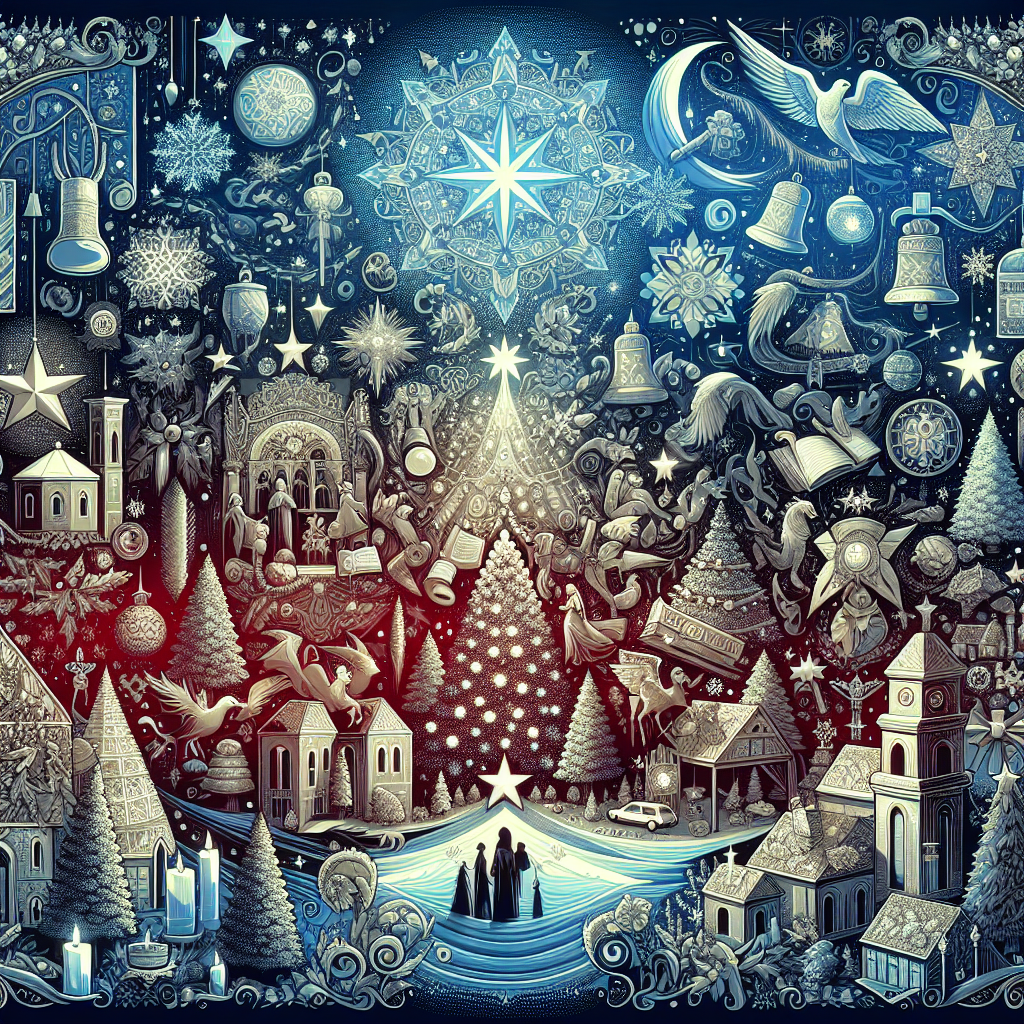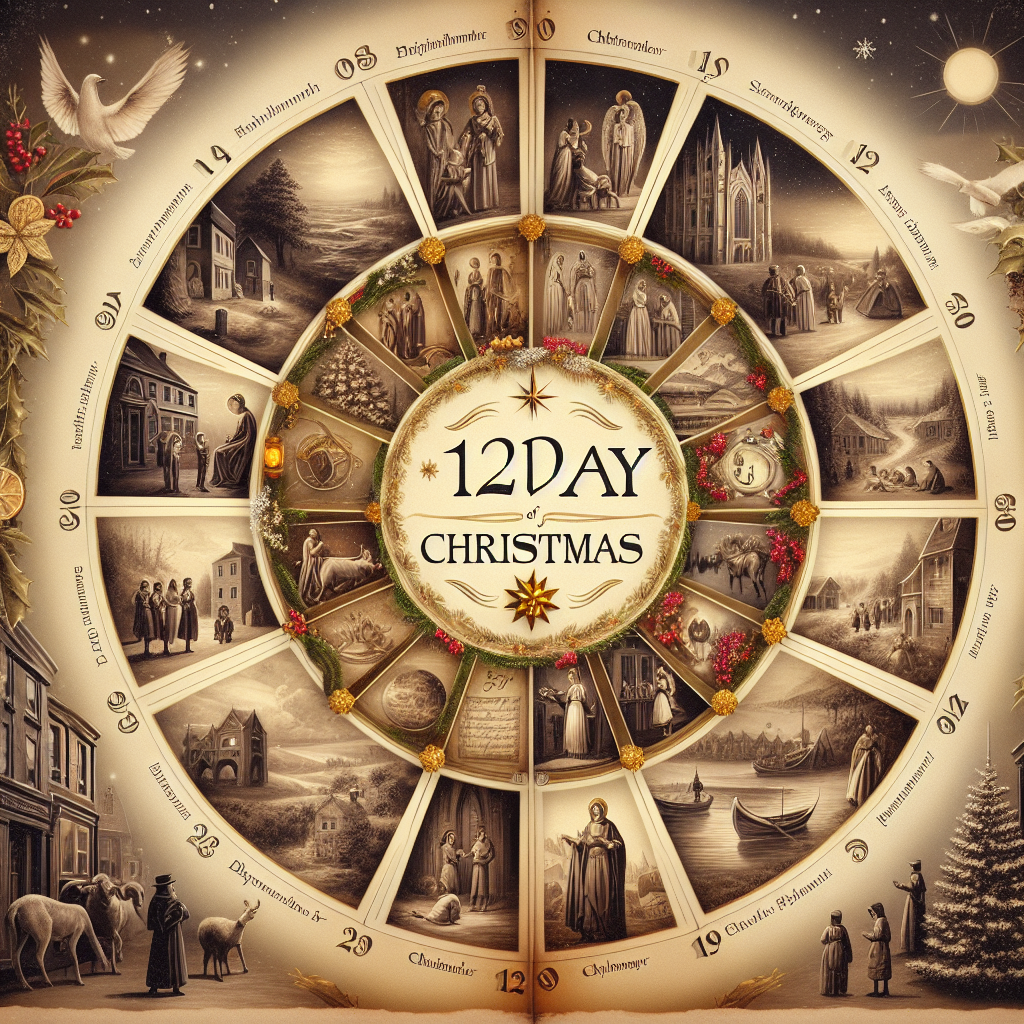Christmas is a time filled with joyful decorations, cozy gatherings, and the excitement of gift-giving. But have you ever wondered why the Christmas season extends beyond just one day? You may be surprised to learn that Christmas is actually 12 days long, and there is a fascinating history behind this tradition. In this article, we will explore the origins of the 12-day Christmas celebration and uncover the significance behind this festive period that extends well beyond December 25th. So, get ready to discover the enchanting reasons why Christmas lasts for 12 magical days!
Table of Contents
The Origin of the Twelve Days of Christmas
While many people associate the Christmas season with a single day on December 25th, the celebration of Christmas traditionally spans a period of twelve days. This tradition has its roots in early Christian history and has evolved over time to become an integral part of the holiday season.
Early Celebrations of Christmas
Early Christians celebrated Christmas with a sense of joy and gratitude for the birth of Jesus Christ. However, the exact dates and duration of these celebrations varied across different regions and cultures. While some celebrated for a few days, others extended the festivities for a longer period of time.
Development of the Twelve Days Tradition
The tradition of celebrating Christmas for twelve days can be traced back to the Middle Ages. As Christianity spread throughout Europe, the twelve days following Christmas Day were designated as a time of celebration and reflection. This period, also known as “Christmastide,” was seen as a continuation of the joyous occasion of Christ’s birth.
Significance of the Number Twelve
The number twelve holds a special significance in the context of Christmas celebrations. It can be attributed to various factors, including biblical references and historical and cultural significance.
Biblical References
In the Bible, the number twelve is often associated with completeness and divine order. There were twelve tribes of Israel and twelve apostles chosen by Jesus. This numerical pattern highlights the significance of the number twelve in religious contexts.
Historical and Cultural Significance
Outside of biblical references, the number twelve also held significance in ancient cultures. The twelve days of Christmas can be seen as a reflection of the twelve months of the year, symbolizing a full cycle or completion. Additionally, the twelve days after Christmas were believed to have a connection to nature, with each day representing a corresponding month of the upcoming year.

Religious Observance
Religious observance plays a central role in the celebration of the twelve days of Christmas. It encompasses various events and aspects tied to the biblical narrative and the life of Jesus Christ.
The Nativity of Jesus
The twelve days of Christmas begin on December 25th, which marks the birth of Jesus. This day, known as the Nativity, is a time for Christians to reflect on the profound significance of Jesus coming into the world as a baby, bringing hope and salvation.
Epiphany and the Adoration of the Magi
The conclusion of the twelve days of Christmas coincides with Epiphany, observed on January 6th. Epiphany commemorates the visit of the Magi, or the Three Wise Men, to the baby Jesus. This event symbolizes the manifestation of Jesus to the Gentiles and the revelation that he is the Savior of all people.
Liturgical Celebrations
The twelve days of Christmas are marked by several liturgical celebrations that hold great significance in Christian traditions.
Advent Season
The first day of the twelve days, December 25th, also marks the culmination of the Advent season. Advent is a time of preparation and anticipation leading up to the celebration of the birth of Christ. It serves as a reminder of the joyous occasion to come.
Christmas Eve and Christmas Day
Christmas Eve and Christmas Day are at the heart of the twelve-day celebration. These days are dedicated to the commemoration of Jesus’ birth and the gathering of families and communities to celebrate this joyous occasion.
Holy Innocents’ Day
On December 28th, Holy Innocents’ Day is observed, which commemorates the innocent children who were killed by King Herod in his attempt to eliminate the baby Jesus. It serves as a reminder of the innocent lives that were lost and the suffering associated with Jesus’ birth.
Feast of St. Stephen
On December 26th, the Feast of St. Stephen honors the first Christian martyr, Stephen. This feast day reminds believers of the sacrifices made by early Christians and encourages them to stand firm in their faith.
Feast of St. John the Apostle
December 27th is dedicated to the Feast of St. John the Apostle. It pays homage to one of Jesus’ closest disciples and emphasizes the importance of loyalty and discipleship.
Feast of the Holy Innocents
In some traditions, the Feast of the Holy Innocents is observed on December 29th instead of December 28th. This feast day serves as a solemn reminder of the innocent lives lost and the need to protect and cherish the most vulnerable members of society.
Feast of the Circumcision of Christ
On January 1st, the Feast of the Circumcision of Christ is observed, marking the eighth day after Jesus’ birth when he was circumcised according to Jewish custom. This feast day highlights Jesus’ fulfillment of the law and his identification with humanity.
Feast of the Epiphany
The final day of the twelve days of Christmas, January 6th, is known as the Feast of the Epiphany. It commemorates the visit of the Magi to the baby Jesus and signifies the revelation of Jesus Christ to the world. This day is celebrated with great joy and is often associated with the exchange of gifts.

Festivities and Traditions
The twelve days of Christmas are filled with festivities and cherished traditions that bring joy and merriment to communities around the world.
Carols, Songs, and Music
Carols and songs have been an integral part of Christmas celebrations for centuries. They capture the spirit of the season and bring people together in joyous singing. Traditional Christmas music is often performed during the twelve days of Christmas, adding to the festive atmosphere.
Yule Log
The Yule log is another long-standing tradition associated with the twelve days of Christmas. It involves burning a specially selected log, often from a fruit-bearing tree, as a symbol of warmth, light, and prosperity for the coming year.
Twelfth Night Celebrations
On the twelfth night after Christmas, which falls on January 5th, communities gather to celebrate with elaborate parties and feasts. This tradition, known as Twelfth Night, marks the end of the Christmas season and is filled with revelry, costumes, and dancing.
Feasting and Merriment
The twelve days of Christmas are a time for feasting and indulgence. Families and friends come together to share festive meals and enjoy the company of loved ones. The rich and varied culinary traditions associated with Christmas add to the sense of celebration and enjoyment.
Propagation of Christmas Festivities
The celebration of the twelve days of Christmas has been propagated and continued throughout history through various means.
Medieval Christian Culture
During the Middle Ages, the Church played a crucial role in promoting and sustaining the celebration of the twelve days of Christmas. It emphasized the importance of religious observance and encouraged communities to come together in joyous worship and fellowship.
Influence of Christmas Plays and Mystery Plays
Christmas plays and mystery plays were popular during the medieval period and contributed significantly to the spread of Christmas festivities. These theatrical performances depicted biblical narratives, including the nativity story, and allowed people to actively participate in the celebration and retelling of these events.
Continued Celebration in Modern Times
The traditions associated with the twelve days of Christmas have persevered and evolved over time. While the religious observance remains at the core, many secular customs have also been incorporated, ensuring that the spirit of Christmas endures and is celebrated in diverse ways.

Variations and Regional Practices
The celebration of the twelve days of Christmas is characterized by a wide array of regional practices and cultural variations.
Diverse Traditions in Different Countries
Throughout the world, different countries have their unique customs and practices associated with the twelve days of Christmas. From the lighting of fireworks in Spain to the exchange of small gifts in Germany, these traditions reflect the richness and diversity of global celebrations.
Additional Holidays and Local Customs
In addition to the core twelve days of Christmas, some regions observe additional holidays and engage in local customs. For example, Boxing Day in the United Kingdom is celebrated on December 26th and is often marked by acts of charity and gift-giving.
Christmas Traditions in Eastern Orthodox Christianity
Eastern Orthodox Christians follow the Julian calendar, which results in a slight variation in the dates of the twelve days of Christmas. The Feast of the Nativity is celebrated on January 7th and is followed by twelve days of festivities and religious observance.
Lingering Holiday Celebrations
Even after the twelve days of Christmas have concluded, some communities continue to celebrate with additional observances and festivities.
Twelfth Night and Epiphany Celebrations
On the twelfth night after Christmas, communities gather for Twelfth Night celebrations. This tradition, rooted in Shakespearean-era England, includes games, masquerades, and the removal of Christmas decorations.
Old Christmas and Other Local Observances
In some rural communities, a tradition known as Old Christmas is observed. This custom follows the Julian calendar, resulting in Christmas being celebrated on January 6th. These unique local observances contribute to the richness and diversity of Christmas celebrations.

Economic and Commercial Factors
Beyond the religious and cultural significance, the celebration of the twelve days of Christmas also has economic and commercial implications.
Retail Marketing and Sales
The twelve days of Christmas provide an extended period for retailers to promote and sell Christmas merchandise. Retailers often offer special promotions and sales throughout this period, tapping into the enthusiasm and festive spirit of consumers.
Growth of the Holiday Season
The extended celebration of the twelve days of Christmas has contributed to the growth of the holiday season as a whole. It allows for a longer period of economic activity and a heightened focus on gift-giving and festive preparations.
Influence of Christmas Decor and Merchandise
The festive atmosphere created by Christmas decorations and merchandise is a significant factor in maintaining the spirit of the season. The decorations and merchandise associated with the twelve days of Christmas contribute to the overall ambiance and excitement of the holiday season.
Maintaining the Spirit of the Season
While the economic and commercial aspects are important, it is essential to remember and prioritize the true essence of the twelve days of Christmas.
Religious Reflection and Devotion
The twelve days of Christmas provide an opportunity for believers to deepen their faith and reflect on the significance of Jesus’ birth. Through prayer, worship, and spiritual contemplation, individuals can reconnect with the core message of Christmas.
Family Gatherings and Bonding
The festive season is a time for families to come together and strengthen their bonds. The twelve days of Christmas offer numerous occasions for family gatherings, creating lasting memories and fostering a sense of togetherness.
Acts of Generosity and Giving
The Christmas season is synonymous with acts of generosity and giving. The twelve days of Christmas can serve as a reminder to extend kindness and goodwill to others, through charitable deeds and acts of service.
Continuation of Christmas Traditions
The celebration of the twelve days of Christmas provides an opportunity to continue cherished traditions. Whether it’s singing carols, exchanging gifts, or participating in festive activities, these traditions help maintain the joy and magic of the holiday season.
In conclusion, the twelve days of Christmas hold deep historical, religious, and cultural significance. From the biblical references to the liturgical celebrations and festive traditions, this extended period of celebration continues to captivate and bring joy to people around the world. Whether it is through religious observance, family gatherings, or acts of generosity, the twelve days of Christmas remind us of the importance of reflection, togetherness, and continuing the timeless traditions that make this season so special.


